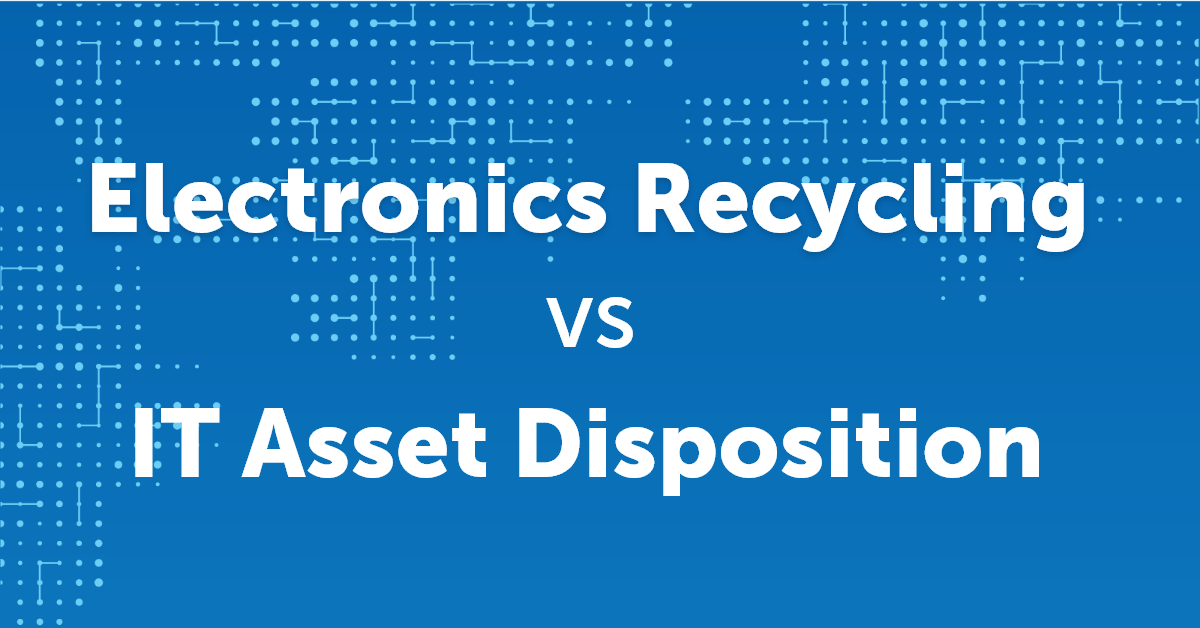Do you have an ITAD partner?
IT Asset Disposition (ITAD) companies offer a range of services beyond just recycling, such as secure data destruction, data center decommissioning, and life cycle management of IT assets. They can help organizations alleviate internal pressures, reduce administration, and ensure legal compliance.
Decom and ITAD
Decommissioning a data center can be very complex and overwhelming. When it’s time to get rid of all your IT equipment, it’s imperative to have a strategy in place for secure and timely disposal. This is where IT Asset Disposal (ITAD) comes into play.
Why ITAD is Booming
The ITAD industry is expected to grow significantly in the coming years, driven by factors such as the migration to cloud computing, growth in big data analytics, and the increasing use of Internet of Things (IoT) devices.
Electronics Recycling vs IT Asset Disposition
IT Asset Disposition (ITAD) is a vital part of the IT industry. In order to maintain a competitive edge, organizations need to constantly update their IT devices and equipment. This means they frequently have obsolete or outdated technology on their hands.
Traditional vs Cloud-Based Infrastructure
IT Asset Disposition (ITAD) is a vital part of the IT industry. In order to maintain a competitive edge, organizations need to constantly update their IT devices and equipment. This means they frequently have obsolete or outdated technology on their hands.
What is secure and compliant ITAD?
IT Asset Disposition (ITAD) is a vital part of the IT industry. In order to maintain a competitive edge, organizations need to constantly update their IT devices and equipment. This means they frequently have obsolete or outdated technology on their hands.
Why Proper Data Destruction Matters
The process of Data Destruction is to make sure that whatever data you currently have stored on an electronic device is totally unreadable after the device has been wiped. The goal of data destruction ensures that this data cannot be recovered and used for unauthorized purposes.
IT Asset Management & why it’s important
IT asset recycling needs to be properly understood in order to make it easier to introduce to your organization as a “best practice.” IT asset management can be one of the most important parts of an organization’s overall strategy and provides up-to-date information to reduce risks and costs.
IT assets decommissioning
If you are preparing for a data center decommission or just getting rid of old or outdated IT assets, the first step is to know what you are disposing of. You need to be diligent in drafting inventory list for each asset that needs disposal
ITAD & Compliance
Restoring equipment to factory setting is not enough to keep someone from accessing old files, passwords, or photos. At OceanTech we destroy data in compliance with all applicable laws and regulations. If there are rules and regulations your company must follow in terms of data security and privacy, it’s best to understand them so you know what to look for.
Important factors you should consider when choosing a data center
Nowadays, many businesses prefer to run their operations from a third-party facility since managing an in-house data center requires a lot of time, IT expertise, and a sizable budget.
Integrating Risk Management
In today’s digital world, all organizations face IT risks irrespective of their size. ITAD entails getting rid of unwanted or obsolete IT resources in an ecologically-responsible and safe manner. It’s an important part of risk management and should be incorporated into your company’s corporate data security strategy.











